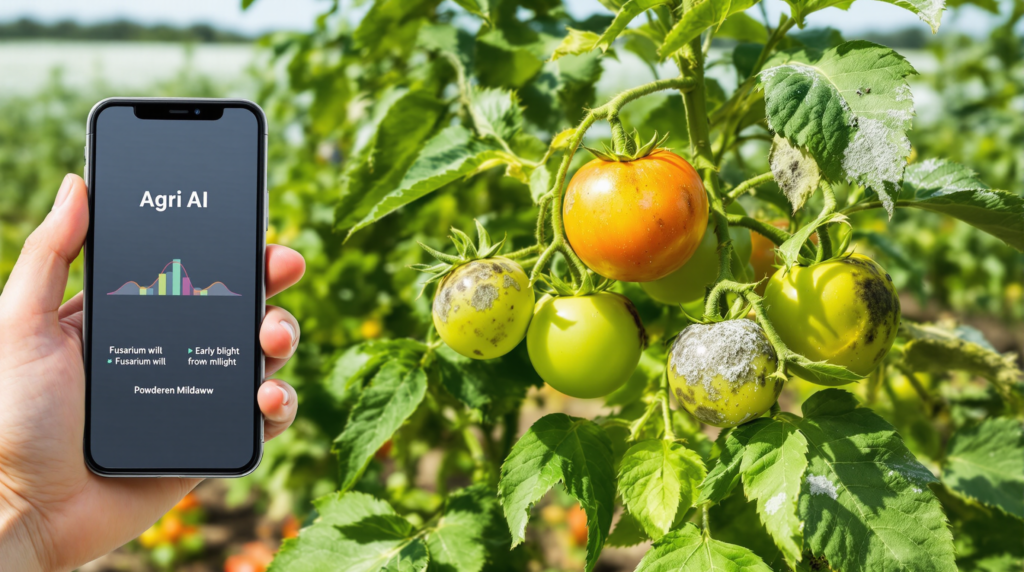Enhancing Crop Resilience Through Integrated Pest Management and Sustainable Practices
The Growing Challenges in Agriculture
Agricultural systems worldwide face a multitude of challenges stemming from climate change, resource scarcity, and evolving pest and disease pressures. In this context, Integrated Pest Management (IPM) and sustainable agriculture practices are becoming increasingly critical. By blending biological, cultural, physical, and chemical tools for pest control, IPM seeks to minimize harm to the environment and human health while preserving the economic viability of crop production.
The Importance of Early Disease Detection
A cornerstone of sustainable agriculture is careful monitoring and timely interventions. Early detection of diseases such as late blight (Phytophthora infestans) in potatoes and tomatoes can prevent significant yield losses. This disease often thrives in warm, humid environments, spreading quickly through airborne spores. Likewise, bacterial wilt (Ralstonia solanacearum) causes vascular blockages that result in sudden wilting, primarily affecting solanaceous crops like potatoes, tomatoes, peppers, and eggplants. Proactive measures—including field scouting, laboratory testing, and the use of pest and disease decision-support tools—enable farmers to apply control techniques at the most effective moments.
Crop Rotation: A Key Strategy for Disease Management
Crop rotation is another key strategy. Rotating different crop families (for instance, moving from a solanaceous crop to a cereal) helps break the life cycles of pests and diseases specific to one plant family. Additionally, implementing high-efficiency irrigation systems like drip or micro-sprinklers can reduce humidity levels that encourage fungal growth. Moreover, choosing cultivars that are bred for disease resistance is a fast-growing area of research. Seed companies and plant breeders are continually developing new varieties that can withstand pathogens such as Fusarium wilt (Fusarium oxysporum f. sp. lycopersici), downy mildew (Plasmopara viticola), and leaf spots (Cercospora spp.).
Biological Control: Leveraging Nature for Pest Management
Biological control is a critical component of IPM and involves leveraging beneficial organisms—such as parasitic wasps and predatory mites—to manage pests. By maintaining ecological balance, farmers can often reduce the need for chemical pesticides, preserving beneficial insects, pollinators, and microbial communities in the soil. In instances where chemical controls are necessary, it is essential to use targeted, selective products rather than broad-spectrum pesticides. This nuanced approach minimizes negative impacts on non-target organisms and delays the development of pest resistance.

Post-Harvest Practices to Prevent Disease Spread
Beyond the field, proper post-harvest handling and storage techniques also play a significant role in mitigating losses. Sorting and removing infected produce promptly can halt the spread of many infectious agents. Sanitation protocols in packing, transportation, and storage are similarly important in preventing disease outbreaks across large geographical areas.
Overall, the combined implementation of IPM, host-plant resistance, crop rotation, and efficient irrigation not only stabilizes yields but also safeguards the surrounding environment and communities. Evidence from both experimental plots and commercial farms underscores the efficacy of these methods, pointing to a more resilient and resource-efficient future for global agriculture.
The Future of Agriculture with Agri AI

In recent years, advancements in agricultural technology have revolutionized the way farmers approach crop management. One of the most impactful innovations is the use of artificial intelligence (AI) in agriculture, often referred to as “Agri AI.” Agri AI tools are designed to assist farmers in identifying diseases, pests, and other crop issues instantly and accurately. By using smartphone applications or integrated field sensors, farmers can capture images of affected plants and receive real-time diagnoses, along with tailored recommendations for treatment.
The adoption of Agri AI is not only transforming how farmers manage pests and diseases but also contributing to the broader goals of sustainable agriculture. By integrating AI-driven tools with traditional IPM strategies, farmers can achieve higher productivity, reduce environmental impact, and ensure food security for a growing global population. As these technologies continue to evolve, they will play an increasingly vital role in enhancing crop resilience and supporting sustainable farming practices.
References
- https://www.nature.com/articles/s41467-023-44464-9
- Food and Agriculture Organization of the United Nations (FAO). Sustainable Crop Production Intensification. Retrieved from http://www.fao.org
- Cornell University Cooperative Extension. (2021). Integrated Pest Management Guidelines. Retrieved from https://cals.cornell.edu/cornell-cooperative-extension
- Savary, S., Ficke, A., Aubertot, J.-N., & Hollier, C. (2012). Crop losses due to diseases and their implications for global food production losses and food security.
- Katan, J. (2017). Cultural practices for disease management: Crop rotation, soil solarization and soil disinfestation.
- Agri AI : Smart Farming Advisor (link to Download last version)
If you want to learn more about Integrated Pest Management for Sustainable Agriculture, check out Agri AI : Smart Farming Advisor and feel free to ask any questions!

Leave a Reply